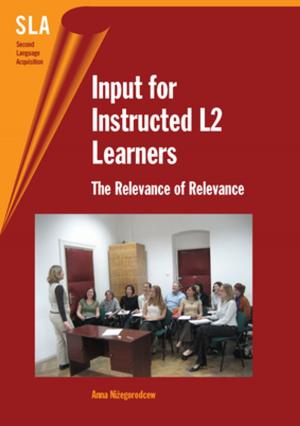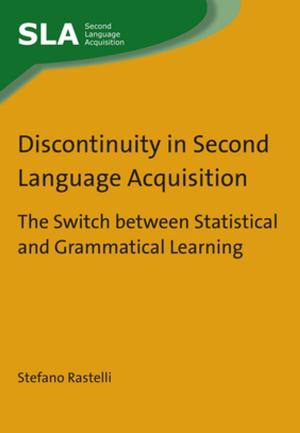Profiling Learner Language as a Dynamic System
Nonfiction, Reference & Language, Language Arts, Study & Teaching, Linguistics| Author: | ISBN: | 9781788922814 | |
| Publisher: | Channel View Publications | Publication: | July 10, 2019 |
| Imprint: | Multilingual Matters | Language: | English |
| Author: | |
| ISBN: | 9781788922814 |
| Publisher: | Channel View Publications |
| Publication: | July 10, 2019 |
| Imprint: | Multilingual Matters |
| Language: | English |
This volume sheds empirical light on Complex Dynamic Systems Theory (CDST) by providing five sets of analyses of two longitudinal, interactional datasets, involving two dyads exchanging emails over one academic semester. The collective study on CDST is the first of its kind, in that it delves into multiple subsystems of learner language, traversing the domains of morphosyntax, semantics, pragmatics and discourse. The data analyses expose the dynamics of the interactional process, offering evidence of core characteristics of complex dynamic systems: sensitive dependence on initial conditions, interconnectedness of subsystems, the emergence of attractor states over time and variation in and between the individuals. Together, the analyses, each alone an engaging description, capture fine-grained patterns of change over time. More importantly, they demonstrate the impact of the ecosystem on individuals’ use of language. The book offers critical insights relevant to CDST researchers, theorists and empiricists alike, as well as to teachers seeking a nuanced understanding of the learning benefits of computer-mediated interactional activities.
This volume sheds empirical light on Complex Dynamic Systems Theory (CDST) by providing five sets of analyses of two longitudinal, interactional datasets, involving two dyads exchanging emails over one academic semester. The collective study on CDST is the first of its kind, in that it delves into multiple subsystems of learner language, traversing the domains of morphosyntax, semantics, pragmatics and discourse. The data analyses expose the dynamics of the interactional process, offering evidence of core characteristics of complex dynamic systems: sensitive dependence on initial conditions, interconnectedness of subsystems, the emergence of attractor states over time and variation in and between the individuals. Together, the analyses, each alone an engaging description, capture fine-grained patterns of change over time. More importantly, they demonstrate the impact of the ecosystem on individuals’ use of language. The book offers critical insights relevant to CDST researchers, theorists and empiricists alike, as well as to teachers seeking a nuanced understanding of the learning benefits of computer-mediated interactional activities.















